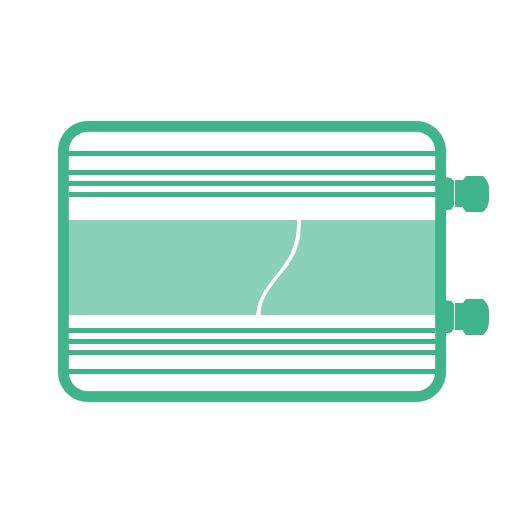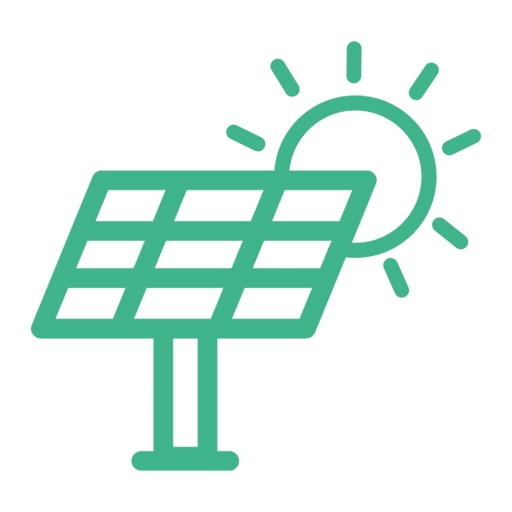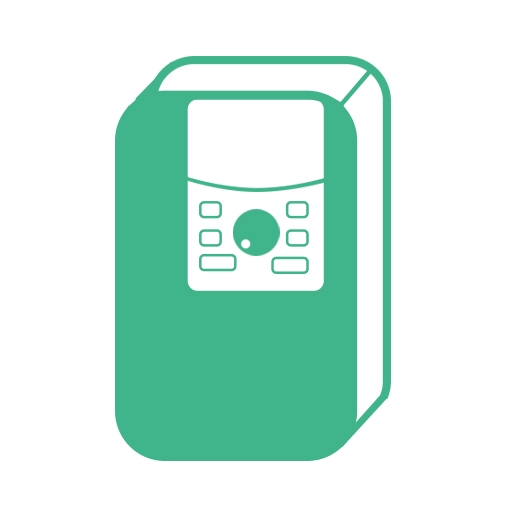-
You have no items in your shopping cart.
- Register
- Log in
- Wishlist
- Shopping cart
FAQ

FREQUENTLY ASKED QUESTIONS

Power Inverter

Sine Wave Inverter

Solar Inverter

Frequency Inverter
Q: What is the efficiency of a power inverter?
A: When it works the power inverter will consume a part of the input power. The output power will be lower than the input power. The efficiency of the power inverter is the ratio of output power and input power. If the input power is 100 watts (from DC power), and the output power is 80 watts (for AC power). Then the efficiency of the power inverter is 80%. When we use a power inverter, it is better not to power the device for more than 80% of the rated power, and not to be continuously used for a long time.
Q: Can I use the power inverter for my car when the engine is turned off?
A: Yes, when used for 300 watts load, the general car battery can provide power for approximately 25-55 minutes in the case of the engine being turned off. If the load is a laptop with 40 watts, the power time will be longer. The power inverter has an under-voltage warning and under-voltage protection circuit. If the battery voltage drops to 10 volts, the under-voltage protection circuit is activated, and the output voltage is cut off. It will prevent the battery voltage is too low and having a start accident in the car engine. If we prepare another battery and connected it to the car battery, then the working time of the power inverter can be doubled.
Q: What size of a power inverter do I need for my RV?
A: It depends on the actual load power of the RV. As to high-power electrical appliances such as air conditioners and refrigerators, the starting current is equivalent to 3-9 times the average working current, and then it is required to select an power inverter with higher power. Taking the 24V 3000W inverter as an example, if the sum of the rated powers of the loads to be used in the RV at the same time is no more than 2800W, the 3000W can guarantee a stable current. It should also be noted that to prolong the inverter's service life, do not operate it at full load for a long time, and do not use the inverter in a condition exceeding 80% of the rated power.
Q: Do power inverters drain car batteries?
A: If you leave your inverter turned on with no load attached, the average draw from your batteries will be 1 amp per hour; 24amps per day; or 168 amps over a week. The simplest solution to this is to just turn the inverter off when not required as the battery drain then becomes zero.
Q: Are power inverters safe?
A: While you might get tempted to power something really demanding with your car power inverter, chances are you might damage your car battery this way. While most probably you won't immediately ruin it to the ground, it will quickly degrade and lose capacity.
Q: What are the important things when using a power inverter?
A: The power inverter output voltage is 220V AC or 110V AC. When in a relatively small space and moveable state, people should pay special attention to it. It is best to place a power inverter in a safe place to prevent electric shock. When not in use, be sure to cut off its power. A power inverter cannot be placed in a warm air outlet or near the location or direct sunlight. Other objects cannot be placed on the power inverter or nearby. Don't put it in rain or sprinkled with water, mainly because of the power inverter is very afraid of the water, it may damage if water enters.
Q: What's the ideal size of a sine wave inverter?
A: The ideal size of a sine wave inverter depends on your specific power requirements. Inverter size is typically measured in terms of its power output capacity, which is expressed in watts. To determine the ideal size, you need to consider the total power consumption of the devices or appliances you plan to connect to the inverter. Keep in mind that sine wave inverters are available in various sizes, ranging from small portable units to larger models capable of handling several thousand watts. Choosing the right size ensures that your inverter can comfortably handle the power demands of your devices without overloading or overheating.
Q: How to install sine wave inverter?
A: The first important step is determining the device's power requirements you want to connect. To do this, you'll need to look at the label on the device to find out the power (watts) or the amps required to run the electrical equipment. Having made sure that the sine wave inverter can produce sufficient power, all that is left to be done is to plug in the inverter at the wall socket and plug in your device in the socket on the inverter. If the battery is charged, you can test the inverter. Do this by switching off the power from the wall socket and checking that your device is still running.
Q: What happens if water goes in sine wave inverter?
A: If water comes into contact with a sine wave inverter, it can cause damage and potentially lead to malfunctions or complete failure of the device. Water is a good conductor of electricity, and when it enters the inverter, it can create short circuits or cause electrical components to short out. This can result in a variety of issues, such as overheating, sparks, or even electrical fires. In addition to the immediate damage caused by water ingress, there can also be long-term effects. Water can corrode the internal components of the inverter, leading to rust and degradation of electrical connections. It is important to disconnect the power source and avoid using the device until it has been thoroughly inspected and repaired by a qualified professional.
Q: Is it safe to use a sine wave inverter?
A: Yes, it is generally safe to use a sine wave inverter. A sine wave inverter is designed to convert direct current (DC) power from a battery or other DC source into alternating current (AC) power that resembles the smooth and continuous sine wave pattern of utility power. This type of inverter is commonly used to power electronic devices, appliances, and other sensitive equipment. Modern sine wave inverters often include built-in protection mechanisms to safeguard against various issues. These may include overload protection, short-circuit protection, over-temperature protection, and low-voltage shutdown. These safety features help prevent damage to the inverter and connected devices.
Q: When do I need a pure sine wave inverter?
A: A pure sine wave inverter is needed when you require high-quality, stable power for sensitive electronics or appliances. It is necessary in situations where clean and reliable power is essential to prevent any potential damage or malfunctions caused by irregular power waveforms. Some examples of when a pure sine wave inverter may be needed include: Running sensitive electronics. If you have sensitive electronics such as laptops, gaming consoles, audio equipment, or medical devices that require a stable and clean power supply, a pure sine wave inverter generator is necessary; Operating audio and video equipment, such as amplifiers, mixers, televisions, and projectors, may require a pure sine wave for optimal performance.
Q: Where is the best installation place for the solar inverter?
A: When the component is away from the grid connection point and the PV solar inverter should install at a place close to the grid connection point, the initial cost and the energy loss will be lower but the difference is not very obvious. If the DC cable is over 100m long, the MPPT matching loss may be caused. In the actual installation, various conditions, including cable distribution convenience and power station safety, shall be considered.
Q: Should I leave my solar inverter on all the time?
A: Yes, you should keep your inverter ON all the time. Otherwise, you will lose your battery backup time due to the self-discharge of batteries. You will need to start the inverter manually every time when grid power failed.
Q: Does solar inverter work at night?
A: At night your solar panels and inverter power down. The inverter isn't running overnight because it doesn't want to draw power. Instead it'll wake back up when the sun shines in the morning. Your home and solar system are connected to the utility grid.
Q: Can you over power a solar inverter?
A: Inverters and their constituent components are designed and rated for certain input voltage levels. If an input voltage were to exceed this rating, it will almost certainly result in the inverter's immediate failure. When oversizing a PV array, it is important to never exceed an inverter's maximum input voltage.
Q: How do I know what size solar inverter to buy?
A: Your inverter should be aligned with the DC rating of the solar system itself. So, if you have a 6 kilowatt (kW) system you will need an inverter that is around the 6000 W mark to match it. It is perfectly fine if your inverter is slightly smaller or larger, but you want it to be about the same size as your system so that all of the DC current being produced can be transformed into usable AC electricity for your home.
Q: Are solar inverters a fire risk?
A: When installed and maintained properly, solar inverters are just as (if not more safe) than other power sources. Especially when they are equipped with appropriate fire suppression systems. With that being said however, in some instances, solar inverters can fail, overheat, and ultimately catch on fire.
Q: Is a frequency inverter the same as a VFD?
A: Yes, a frequency inverter and a VFD (variable frequency drive) are essentially the same thing. Both terms are commonly used to refer to a device that controls the speed and torque of an electric motor by varying the frequency and voltage of the power supplied to the motor. A frequency inverter is used to convert fixed-frequency, fixed-voltage AC power from the electrical grid into adjustable frequency and voltage output suitable for controlling the speed of an AC motor. By varying the frequency and voltage, the motor's speed can be adjusted according to the desired application requirements.
Q: Can the frequency inverter be tuned to 1 Hz?
A: If the frequency inverter is used in general AC asynchronous motor, inverter tuned to 1Hz has been close to DC, is absolutely not allowed, the motor will run in the inverter limit within the maximum current work, the motor will heat up seriously, it is likely to burn the motor. If more than 50 Hz operation will increase the iron loss of the motor, the motor is also detrimental, it is generally best not to exceed 60 Hz, (more than a short period of time is allowed) otherwise it will also affect the life of the motor.
Q: What should be done about overcurrent of frequency inverter?
A: When dealing with overcurrent in a frequency inverter, it is crucial to take immediate action to prevent damage and ensure the system's safety. Firstly, identify the cause of the overcurrent, such as motor overload or a fault in the inverter itself. Implement protective measures, such as current limit settings and motor protection devices, to prevent excessive currents. Verify proper wiring connections, check for short circuits or ground faults, and ensure the motor load matches the inverter's capacity. Regular maintenance and inspections are essential to detect any abnormalities early on.
Q: Why can't frequency inverter be used as an inverter power supply?
A: The whole circuit of inverter power supply is composed of AC constant current, AC filter and other parts, so the output voltage and current waveform are pure sine wave, which is very close to the ideal AC power supply. It can output the voltage and frequency of the power grid of any country in the world. The inverter is composed of AC constant current and AC (modulating wave) circuit, and the standard name of the inverter should be inverter speed regulator. The output voltage waveform is pulse square wave, and there are many harmonic components, and the voltage and frequency change proportionally at the same time, and cannot be adjusted separately, so it does not meet the requirements of AC power supply.
Q: Why is the temperature rise of the motor higher than that at power frequency when using a frequency inverter?
A: Because the output voltage waveform of frequency inverter is not sine wave, but distorted wave, the motor current at rated torque is about 10% more than at work frequency, so the temperature rise is slightly higher than at work frequency. Another point: when the motor speed is reduced, the motor cooling fan speed is not enough, the motor temperature rise will be higher.
